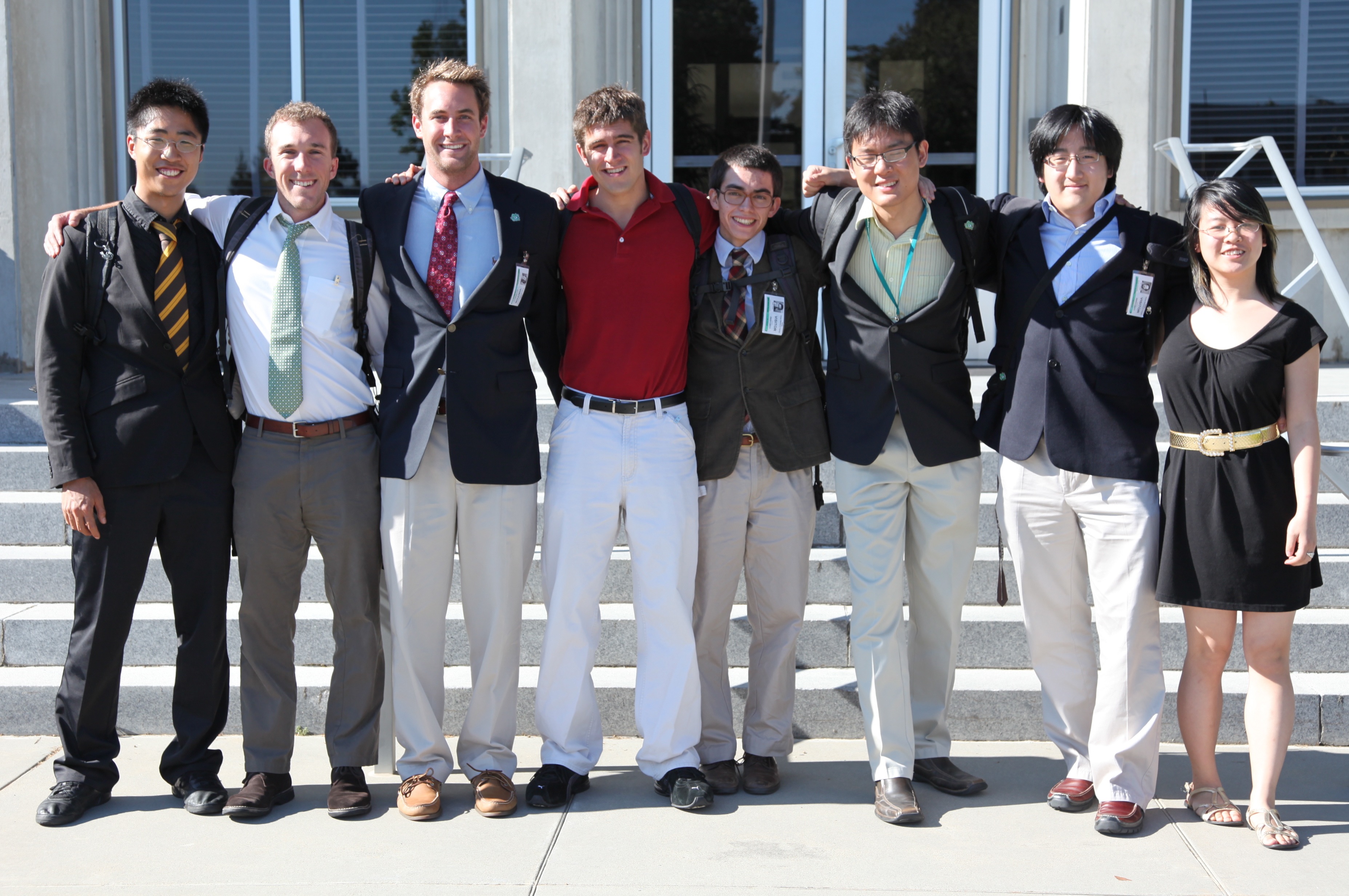Team:Brown-Stanford
From 2011.igem.org
| Line 1: | Line 1: | ||
{{:Team:Brown-Stanford/Templates/Main}} | {{:Team:Brown-Stanford/Templates/Main}} | ||
| - | |||
<div id="twitterWrap"> | <div id="twitterWrap"> | ||
<div id="twitter"> | <div id="twitter"> | ||
</div> | </div> | ||
</div> | </div> | ||
| - | |||
== '''Exploring the Synthetic Biology Applications to Mars Colonization''' == | == '''Exploring the Synthetic Biology Applications to Mars Colonization''' == | ||
| - | |||
Expanding the realm of human exploration to space is one of the primary goals of our space program. Our project aims to make human exploration and settlement on Mars, the closest earth-analogue, more cost-effective and self-sustaining. In order to maintain a continued presence on another planet, we will need to build structures and produce useful materials such as nutrients, drugs, and fuel. Our project has three major components: REGObricks, Biosensor, and PowerCell. REGObricks aims to reduce upmass by using in-situ regolith to create hard, durable, building materials. The bacterium S. pasteurii excretes ammonia and carbonate as byproducts of the urease reaction and in the presence of calcium, creates calcium carbonate crystals that bind the regolith particles to form a brick with compressive strength comparable to concrete. Biosensor is a novel mechanism of FRET reporting using engineered parts of the bacterial cellulosome in the form of cohesin-dockerin pairs. When combined with the desired activator, this sensor can help colonists detect DNA damage, environmental conditions, and more. PowerCell creates a more self-sustaining colony by using cyanobacteria to export carbon and nitrogen into the media, which are then taken up for use by heterotrophic organisms, such as E. coli, that produce our desired products. Thus, REGObricks, Biosensor, and any other microorganisms brought to Mars can be maintained without the need of additional inputs. All three projects suggest that synthetic biology will play a crucial role in enabling further space exploration and colonization. | Expanding the realm of human exploration to space is one of the primary goals of our space program. Our project aims to make human exploration and settlement on Mars, the closest earth-analogue, more cost-effective and self-sustaining. In order to maintain a continued presence on another planet, we will need to build structures and produce useful materials such as nutrients, drugs, and fuel. Our project has three major components: REGObricks, Biosensor, and PowerCell. REGObricks aims to reduce upmass by using in-situ regolith to create hard, durable, building materials. The bacterium S. pasteurii excretes ammonia and carbonate as byproducts of the urease reaction and in the presence of calcium, creates calcium carbonate crystals that bind the regolith particles to form a brick with compressive strength comparable to concrete. Biosensor is a novel mechanism of FRET reporting using engineered parts of the bacterial cellulosome in the form of cohesin-dockerin pairs. When combined with the desired activator, this sensor can help colonists detect DNA damage, environmental conditions, and more. PowerCell creates a more self-sustaining colony by using cyanobacteria to export carbon and nitrogen into the media, which are then taken up for use by heterotrophic organisms, such as E. coli, that produce our desired products. Thus, REGObricks, Biosensor, and any other microorganisms brought to Mars can be maintained without the need of additional inputs. All three projects suggest that synthetic biology will play a crucial role in enabling further space exploration and colonization. | ||
| - | |||
== '''News''' == | == '''News''' == | ||
=== '''June 7<sup>th</sup>, 2011''' === | === '''June 7<sup>th</sup>, 2011''' === | ||
Revision as of 23:29, 7 July 2011
Exploring the Synthetic Biology Applications to Mars Colonization
Expanding the realm of human exploration to space is one of the primary goals of our space program. Our project aims to make human exploration and settlement on Mars, the closest earth-analogue, more cost-effective and self-sustaining. In order to maintain a continued presence on another planet, we will need to build structures and produce useful materials such as nutrients, drugs, and fuel. Our project has three major components: REGObricks, Biosensor, and PowerCell. REGObricks aims to reduce upmass by using in-situ regolith to create hard, durable, building materials. The bacterium S. pasteurii excretes ammonia and carbonate as byproducts of the urease reaction and in the presence of calcium, creates calcium carbonate crystals that bind the regolith particles to form a brick with compressive strength comparable to concrete. Biosensor is a novel mechanism of FRET reporting using engineered parts of the bacterial cellulosome in the form of cohesin-dockerin pairs. When combined with the desired activator, this sensor can help colonists detect DNA damage, environmental conditions, and more. PowerCell creates a more self-sustaining colony by using cyanobacteria to export carbon and nitrogen into the media, which are then taken up for use by heterotrophic organisms, such as E. coli, that produce our desired products. Thus, REGObricks, Biosensor, and any other microorganisms brought to Mars can be maintained without the need of additional inputs. All three projects suggest that synthetic biology will play a crucial role in enabling further space exploration and colonization.
News
June 7th, 2011
 "
"






